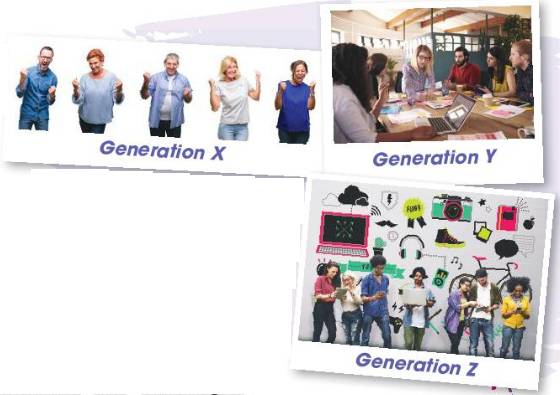K
Khách
Hãy nhập câu hỏi của bạn vào đây, nếu là tài khoản VIP, bạn sẽ được ưu tiên trả lời.
Các câu hỏi dưới đây có thể giống với câu hỏi trên
Bảng xếp hạng
Tất cả
Toán
Vật lý
Hóa học
Sinh học
Ngữ văn
Tiếng anh
Lịch sử
Địa lý
Tin học
Công nghệ
Giáo dục công dân
Âm nhạc
Mỹ thuật
Tiếng anh thí điểm
Lịch sử và Địa lý
Thể dục
Khoa học
Tự nhiên và xã hội
Đạo đức
Thủ công
Quốc phòng an ninh
Tiếng việt
Khoa học tự nhiên
- Tuần
- Tháng
- Năm
-
DHĐỗ Hoàn VIP60 GP
-
50 GP
-
41 GP
-
26 GP
-
119 GP
-
VN18 GP
-
14 GP
-
N12 GP
-
H10 GP
-
10 GP


Generation X includes those born between 1965 and 1981, during the reconstruction of Europe after the war. They are less dependent on smartphones than the next generations.
Generation Y is those born between 1982 and 1994 and technology is part of their everyday lives: all their activities are mediated by a screen. However, the millennial generation is labelled as being lazy, narcissistic and spoilt.
Generation Z were born between1995 and 2010 — they arrived with a tablet and a smartphone under their arms. It is a group of people that is marked by the Internet. Their mastery of technologies may make them neglect their interpersonal relationships to a greater extent, but they are the ones who give more of a voice to social causes on the Internet.
generation X:
the most is old person, most are over 60 years old. They're grandparents.
generation Y:
they was born around 1980 ; 1990 – early 2000s. The most is our parents.
generation Z:
they 1997 đến năm 2012. Mostly young people these days